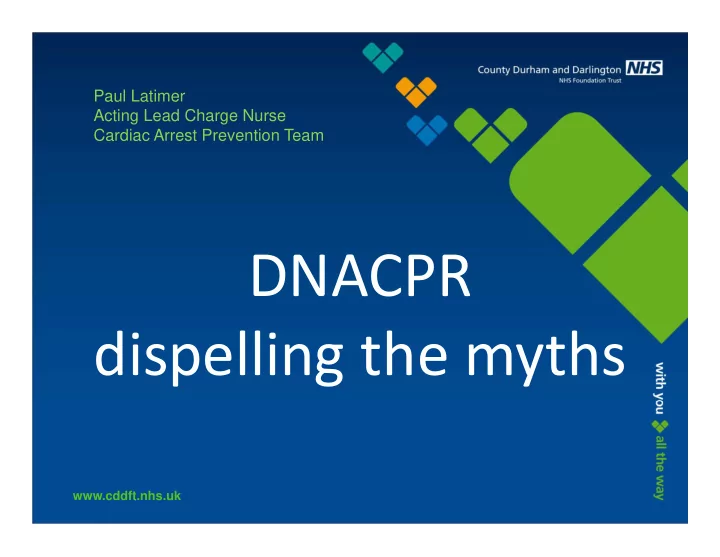

Paul Latimer Acting Lead Charge Nurse Cardiac Arrest Prevention Team DNACPR dispelling the myths www.cddft.nhs.uk
Resuscitation – the facts • Cardio Pulmonary Resuscitation (CPR) is a traumatic event • It has a poor survival rate • It is not how you see it on TV • In many patients it would be unsuccessful www.cddft.nhs.uk
www.cddft.nhs.uk
What a DNACPR is What is DNACPR? ‐ Do Not Attempt Cardiopulmonary Resuscitation – Is a clinical decision that is made in the event of the heart stopping, with no further action being undertaken and a dignified death is able to take place IT DOES NOT MEAN THAT THE PATIENT WILL NOT BE TREATED www.cddft.nhs.uk
To CPR or not to CPR? Few patients are like Fabrice Muamba Most of our patients have complex chronic disease processes which severely limit the success of CPR www.cddft.nhs.uk
The issues • DNACPR decisions rest with the medical team if it is deemed to be an unsuccessful procedure. However this decision must be communicated to patients and/or family • When resuscitation might be successful it is the decision of the patient and consent must be gained www.cddft.nhs.uk
• DNACPR decisions are not made lightly • They are reviewed on a regular basis, and if the patients condition was to change, the decision could be revoked www.cddft.nhs.uk
Let’s talk about it • Communication is the key to all successful healthcare issues • The more we talk about DNACPR, the easier the conversations will become • A patient and relative leaflet has been devised to help facilitate the communication process www.cddft.nhs.uk
Any Questions? www.cddft.nhs.uk
Recommend
More recommend